On the territory of Russia, especially in the middle strip, it is rather difficult to grow decorative plants. Therefore, domestic gardeners are resolved with new and exotic varieties of shrubs and Lian, which can be attributed to the curious lilac Dolichos. This plant is considered to be a dick even for experienced and knowledgeable gardeners who have seen many plants. Such an amazing and unique plant, possessing just a magnificent appearance, is still quite rare today in the gardens in Russia. This is due, first of all, with the peculiarities of culture culture - Dolichos in a temperate climate with cold winters can only be used as an annual plant. However, despite this fact, the plant of Dolichos or the curly liana will become an excellent decoration of an artificial support or gazebo.
In this article, consider the morphological features and description of Dolichos, as well as note the characteristics of popular varieties of this culture. We present the main stages and rules for landing and care for this Liana.
Features and morphological description of Dolichos
Dolichos - Liana just extraordinary beauty. It is a curly, perennial, grassy plant that belongs to a large bean family. The natural area of \u200b\u200bthe habitat of the climbing Dolichos is the tropical and subtropical territories of East Africa, Kilimanjaro, Asia, India. Under the conditions of a mild climate in these countries, Dolichos or Hyacinth Bob can be grown as a long-term plant throughout the year. On the territory of Russia, this curly liana adapted only as an annual plant, which in one season passes the whole cycle of its growth: it grows quickly, blooms and after that gradually dies. Many breeders tried to grow some varieties of Dolichos as a long-term Lian, but nothing really happened, which is associated with cold and long winters.
There are still many centuries ago about the existence of Hyacinth Bob, when people began to use this culture not only to decorate their sites, but also in food. In this case, this is a very unique plant, the fruits of which can be safely used in food for the preparation of various dishes. The beans or the beans of Dolichos have the shape of ordinary legumes that have a very pleasant taste. However, many domestic gardeners still have poorly knowing about all the peculiarities of growing this culture, which will undoubtedly become a simply indispensable decoration of any vertical surface.
Another unique feature of the curl of Dolichos is considered to have the presence of a plant just a huge number of various names that were assigned to culture over the years. Very often you can hear such names as a hyacinth bob, a curly lilac, Cocornik, Egyptian or Turkish Bob, Lobia or Lilac Liana. The climbing lilac is a plant called the same fragrant lilac flowers, which in large quantities bloom on thin shoots of Liana.
Description of Dolichos:
- The climbing dolichos is a perennial, grassy, \u200b\u200bflowering plant, which today is considered a rather rare guest in Russia, especially in the middle lane with temperate climate.
- This curving liana has a very powerful root system, which is represented by a strongly branched rhizome with a large number of long cords with seals along the entire length.
- Floorly branched herbaceous, long shoots that can reach 3-4 meters grow out of the root. However, this concerns only more southern regions, for example, Krasnodar Territory. When growing in a more moderate climate, Liana can grow up to 1.5-2 meters. In nature, there are copies of up to 10 meters high in the natural habitat.
- Dolichos ordinary has one feature that is different from others from others - her shoots are wound around the support counterclockwise. The mustache on the shoots are not.
- Stems plants are covered with brown-red bark.
- Over the entire length of thin shoots, large leaves are located, which are attached with the help of cuffs.
- On the shape of a sheet plate core, three, very similar in appearance on the leaves of beans or beans. The leaves have a pointed top and rounded base.
- Surchase leaf surface and slightly leathery.
- The diversified and color of the leaves, it can vary from dark green saturated color to reddish-purple.
- One of the main decorations are the flowers of Dolichos, which are very similar to the aroma similar to flower clusters of lilac.
- The flowering of this plant begins approximately in mid-June and lasts before the onset of the first frosts. At the same time, blooming one brush flower lasts about 3 weeks.
- Long creeps-shaped inflorescences are formed at the ends of the shoots or in the sinuses of the leaves at the base of the cuttings.
- Inflorescences consist of a large number of small colors, which, in their shape, resemble the grave crops familiar to all flowers. In one brush, it can take up to 40 flowers.
- Amazing the imagination and a variety of colors of petals of inflorescences. It can be snow-white, pink, purple or lilac, pure-purple or two-temperature. A specific shade of colors depends on the variety of hyacinth beans.
- Dolichos flowers exude a very pleasant fragrance.
- This plant is distinguished by cross-pollination, after which the fruits are formed - Dolichos beans, which can be called a decorative decoration of the curly lianas.
- Beans or pods have an oblong curved shape, in length can reach an average of 5-6 cm.
- The surface of such pods glossy, has a white, green, purple or reddish tint, which gives them decorativeness.
- Inside the pod there are seeds of Dolichos, which are small black, brown or orange peas with a white comb. It is worth noting that these black beans are edible and have a rather pleasant taste. They can be safely used for cooking.
- This plant has another feature. At the end of the summer, when the lower leaves begin to shut up, young green leaves appear on the tops and flowers are tied. Therefore, simultaneously on one hyacintage liane, flowers, leaves of different shade and fruits can be observed.
- Dolichos can be used to create a unique landscape design. This liana is planted along unsightly buildings, fences, near arbors and terraces. In addition, it is possible to create special supports, the lianas are laid next.
A variety of varieties of Dolichos.
In natural habitats, there are a large number of different types of hyacinth beans, the total number of which is approximately 70 varieties. However, in conditions of temperate climate of Russia, only a few varieties of the species of Dolichos Lablab ordinary are used. The remaining types and varieties of this plant to our gardeners are still unknown, besides, they are difficult to grow in our climate. Consider the characteristics of the most popular varieties of climbing lilac.
- Ruby Moon Dolichos. This kind of hyacinth beans is a liano with flexible shoots like lilac. The stalks of the plant can reach the length of the maximum 3-4 meters, laid at the same time with the support counterclockwise. The "Ruby Moon" variety is characterized by large leaves of the heart-shaped shape with a pointed top and rounded base. Sheet plates have bright green with a small purple tint. On the shoots bloom around in the middle of June long-shaped inflorescences with large lilac flowers, which are similar to the moths. Flowers can be used for cutting, they stand long enough in water. After biting inflorescence, glossy dark purple beans appear, adorning the plant until late autumn.
- Valichos variety "Lilac Cascade". This type of curly lilac is ideal for growing in balconies and in vases, is most often used for vertical landscaping. This is caused by shorter shoots that are distinguished by a strong branching. One plant can with up to 30 pieces. Liana does not bloom as abundantly as the previous variety, but still boasts a beautiful and bright colors of purple-lilac shade. The grade is resistant to cooling.
- Valichos variety "Violet Garland". It is a fairly tall grade, whose shoots can reach 4-6 meters. It has very large foliage and flowers. During flowering on shoots, a long brush of inflorescences appear, which resemble garland. Flowers have a saturated purple shade. Leaves heart-shaped, dark green. The inflorescences of Violet Garland varieties are perfect for cutting, they can sleep for a long time in water.
- Dolichos variety "Niagara Falls". Beautiful one-year liana, which can be in height to reach 3-4 meters. During flowering in the sinuses of the leaves on the tops of the shoots, long brushless inflorescences of bright lilac flowers bloom. Blossom can last to the most frosts. After biting inflorescences on shoots, glossy, purple beans 6-6 cm long appear.
Dolichos reproduction: the most common ways
The cultivation of dolichos or curly lilac is possible at home. For this, it is enough to know the most suitable and common methods of breeding culture. This exotic liana multiplies with seeds and seedlings, it is sufficient to own the main skills of these processes to get a beautiful and unique plant on its plot.
Seed reproduction of Dolichos.
- In culture under conditions of temperate climate, Dolichos breeds exclusively in the seed method. There are two options: reckless and eaten.
- In the open ground, seeds are planted at around the end of April or in early May. At the same time, seedlings will appear fairly late.
- First of all, the seeds must be scarified, i.e. disrupt the firm shell of beans. To do this, it can be punctured by something or lost by sandpaper, after which the seeds are flooded with water in which they must be within a day.
- Next, the seeds must be placed in a special container for germination, so you will increase their germination. To do this, on the bottom of the tank, put the layer of moss, on top of which there are already swollen seeds. Next they are covered with a napkin. Capacities with seeds need to be removed into a warm place for germination. Usually, when complying with all rules, the roots appear in about 3-4 days.
- Next, you can start landing seeds to the garden, while the soil at the landing site must be dried up.
- Seeds are planted at a depth of no more than 3 cm in compliance with the specific interval between them. PI landing of curly grades seeds are planted at a distance of 30-50 cm, and when landing dwarf varieties it is necessary to leave no more than 30 cm.
Embossed method of reproduction of Dolichos
- The cultivation of Dolichos is recommended by many experienced gardeners, as in this case it is possible to quickly get an adult plant with early bloom.
- Before planting Dolichos to seedlings, it is necessary to carry out the scarification procedure or damage to the solid shell to enter moisture inside Bob. For this, as already described above, you can take sandpaper or nail file.
- Next, the seeds are soaked for a day in cold water.
- Prepare suitable containers or drawers for sowing seeds of climbing lianas. In this case, you can use ready-made peat pots.
- Seeds of Dolichos at the seedlings in about mid March.
- Containers and drawers are pre-filled with fertile and loose soil, after which it is well moistened. As an soil mixture, you can use the composition of sheet soil, sand and peat, to which it is recommended to add charcoal.
- If you are using peat pots, then one seed planted on one such container. When landing into the container between seeds, it is necessary to leave a distance of 4-5 cm. In this case, the seeds are minimized as much as possible by about 3 cm.
- After landing, boxes or containers with seeds must be placed in a well-lit and warm place. For germination of beans, it is important to maintain air temperature not less than 20 degrees.
- Further departure is in moderate watering of the seedlings.
- In about the middle or end of May, the graced seedlings can be planted in an open ground.
How to plant Dolichos in Open Soil - Phased Instructions
The landing of the Dolichos into the open ground does not have serious difficulties, all processes are understandable and can even be under the nearest gardener. However, it is important to clearly comply with all the rules of the main stages of preparation for landing and the actual plant of plant landing on the garden. Consider the characteristics and the main nuances of all stages of landing of hyacinth beans in the open soil.
Stage 1. Selection and purchase of the landing material of Dolichos
- First of all, each gardener needs to think about the purchase of high-quality planting material.
- Buy Dolichos can be in a specialized garden center or kennel who is professionally engaged in breeding plants. It should be borne in mind that this is not such a common plant, so sometimes it is quite difficult to find seedlings or seeds of the curly lilac.
- When choosing plant seeds, it is important to look at the expiration date, as they lose their part of approximately 5-7 years. In addition, it is important to pay attention to the preparedness of seeds to landing. Usually in the instructions should be indicated whether scarification seeds were performed.
- In nurseries you can buy immediately ready and strong seedlings of Dolichos. In this case, it is necessary to carefully examine young plants before purchase. Soothes should be strong and flexible, saturated color leaves without signs of wilting. Soil in the container should be clean and moistened.
- Buying the landing material only those varieties that are cultivated in your region. Do not give in to persuasion and acquire very exotic varieties of doliahos, as they are quite difficult to grow.
Stage 2. Choosing a place for landing of Dolichos
- At the next stage of preparation, it is important to decide on the landing site.
- Since this is a curly liana, the place must be selected near the specific support. You can choose a plot along the walls of buildings or along the fences.
- In this case, the place is ideally suitable near the arbors or terraces. When landing dwarf varieties of Dolichos, you can choose a place on the balcony.
- The landing site must necessarily be well lit and with a large amount of sunlight throughout the day. This is due to the fact that this plant is a thermal-loving culture from tropical countries.
- The place should also be protected from strong wind and drafts.
- Ideal for landing of the seedlings of Dolichos Eastern side.
- It is also important to pay attention to the predecessors who grew on the site to Liana. It is best to plant seedlings after cucumbers, cabbage or other rooteploods.
Stage 3. Choice and preparation of soil for landing of Dolichos
- This culture prefers to grow on fertile and loose soils with a large supply of nutrients.
- It is important to ensure that the soil is a neutral reaction, since too acidic or alkaline soil can adversely affect the plant.
- The soil at the landing site should not contain a large amount of nitrogen.
- In addition, the site you chosen should be well drained and not to delay moisture.
- Before planting the soil on the site, carefully loosen and fertilize with the organic. With an excessively acidic reaction, you can add some charcoal or lime.
Stage 4. The process of landing of Dolichos to open ground
- In the open soil seeds or seedlings of the climbing lianas planted around at the end of May or in early June. It is important to verify the absence of a threat of return freezers, which can negatively affect young plants.
- First of all, it is necessary to prepare landing wells for planting seedlings. This is done according to certain schemes. The landing wells must be at a distance of 45-50 cm from each other in one row. If a two-row landing is planned, then between the rows it is necessary to leave a distance of 100 cm. In this case, the second row of the wells are made in a checker order.
- If you want to plant more than a row of Dolichos, then be sure to leave between each two row of the track width of 70-80 cm. The size of one well on average should be 10 cm in diameter and in depth.
- Before planting, be sure to break the garden with organic fertilizers.
- Containers or pots with seedlings also need to pour, as it will greatly facilitate the extraction of planting material.
- Next, carefully remove one sighter from the box, trying not to damage the root system, and we carry it into the landing well. So do it with all other seedlings.
- After planting the plants are abundantly watered with water, and the soil around them is sprinkled with a layer of mulch from peat or sawdust.
- At this stage, you can establish a support, as the dollyos differ quite rapid growth.
Agrotechnology of growing Dolichos in the open soil: Secrets and nuances of care
The care of the Dolichos is quite simple, however, to obtain a beautiful and adult plant, the main agrotechnical techniques can be performed throughout the season.
- Watering. Dolichos needs regular irrigation, but without overwhelming. It is necessary that only the top layer of the soil has come down. It is enough to water the Liana twice a week, and in the arid period, it is possible to need daily watering.
- Loosening and mulching. To provide Liana's influx of oxygen to the roots, it is necessary to regularly carry out the soil and removal of weeds. To reduce the evaporation of moisture, the soil is needed to mulch the layer of peat or sawdust.
- Feeding The first time after landing, Dolichos fertreal after about a month with the help of mineral fertilizers. You can use fertilizers for vegetables and the organic. There are several options for making feeding: a solution of bird litter or a solution of garden weeds. At the same time, throughout the season, the Liana fertilize every two weeks.
- Support. Curly Lians from the moment of landing need permanent support. As a support, you can use walls or fence. Alternatively, the support for the shoots of Liana can be made specifically using a chain mesh, long pegs, high trellis.
- Fighting diseases and pests. This plant is very rarely affected by diseases. This happens only if the rules of culture growing are non-compliance. To combat pests, for example, with caterpillars or tool, it is necessary to use insecticides.
Dolichos - Photo
Dolichos or the curly lilac is a bright representative of Lian, who is only gaining popularity in Russia. Despite the distrust of the gardeners to this exotic guest, hyacinth beans can become a real decoration of any site.

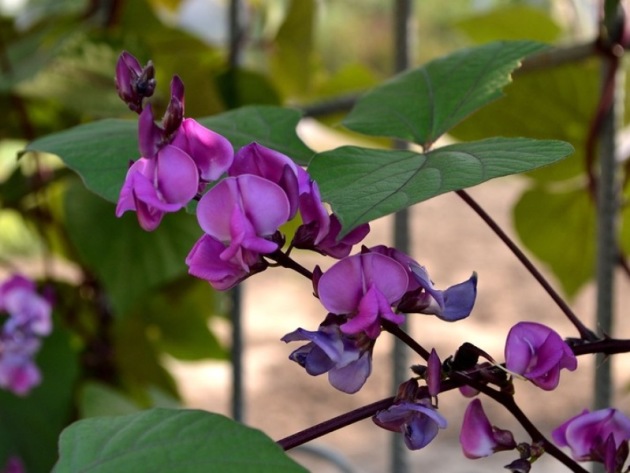
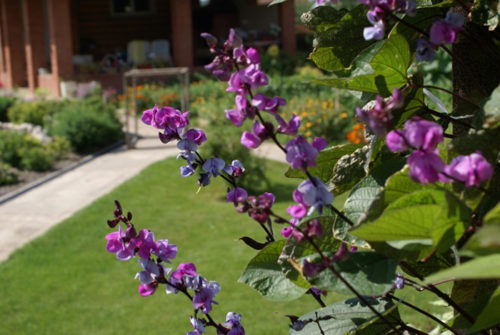
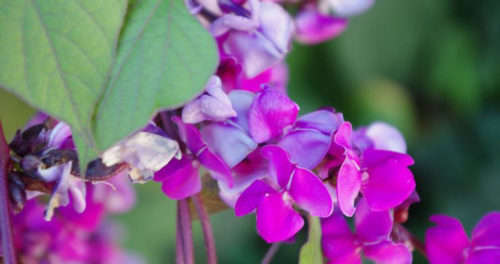
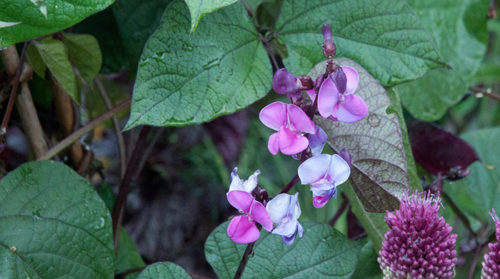
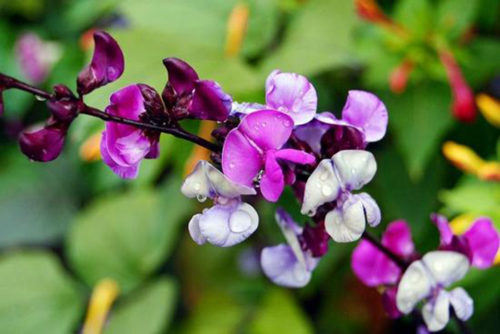
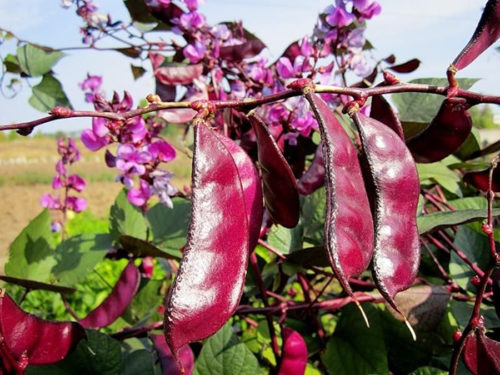
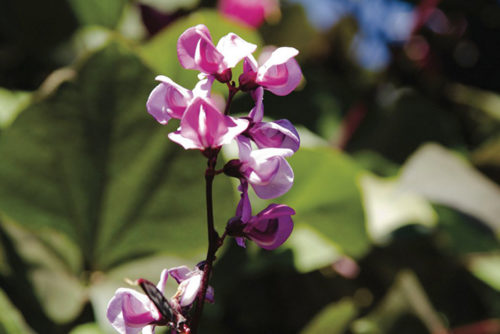

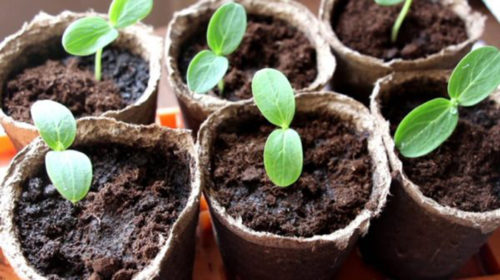
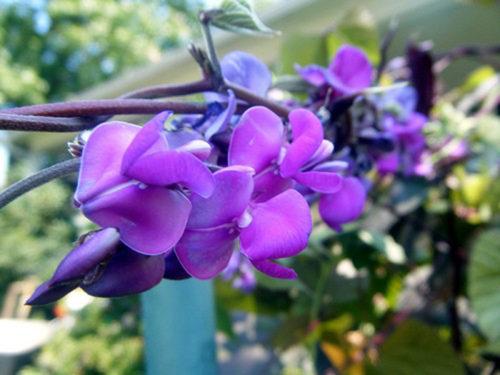
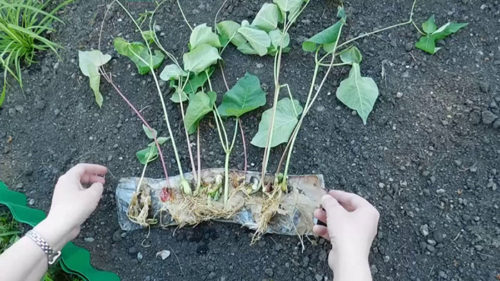
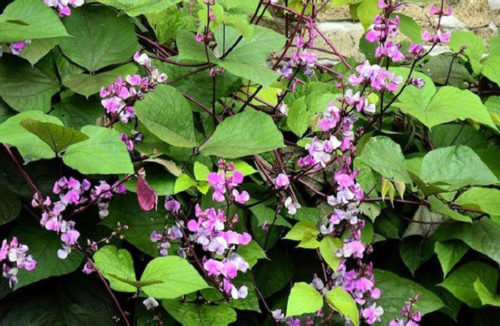
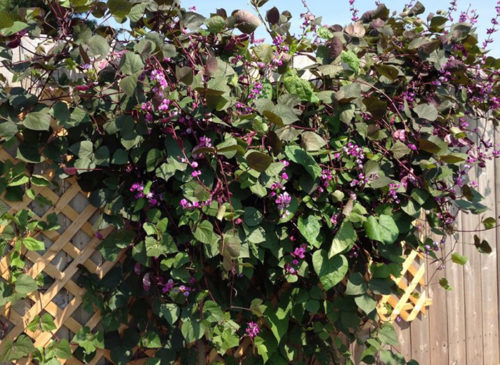

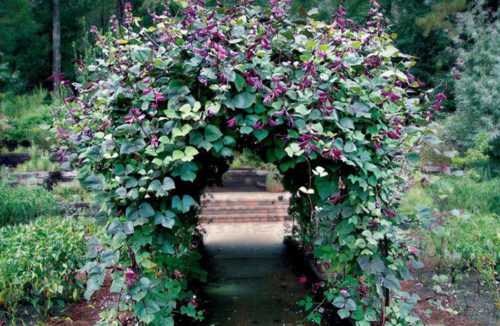
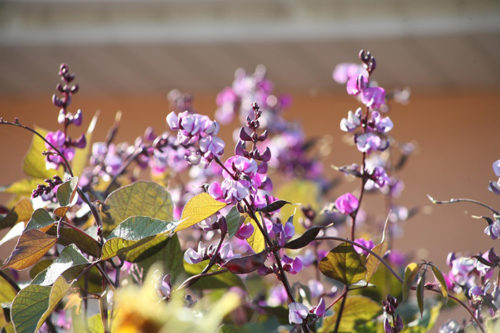
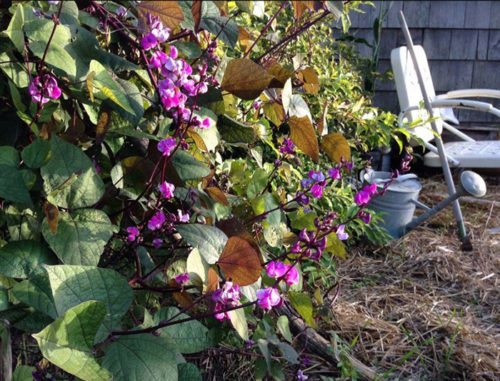












 Start a discussion ...
Start a discussion ...